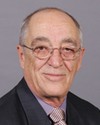Thank you very much.
Normally we now go to the next order of opposition parties in the House, but the member is not able to be here today. Normally this five minutes would go to them, but I am going to step into the prerogative of the chair to take up those five minutes. Perhaps the clerk can start the clock so that I don't go over my own time.
First off, I was very impressed and humbled to hear about, in your presentation, all the various things. I think Canada has some way to go. I was impressed with the guarantees and loans for homes, life insurance policies, your education components, etc.
One that I wish to follow up particularly with the questioning is this aspect of your national cemeteries and their designation, in a sense. You mentioned the term “shrines”. I visited your Arlington National Cemetery. It's very impressive. It's a moving tribute.
I'm going to be going to your country, hopefully in a few hours, certainly by later today or tomorrow, travelling into Maine and New York State. Can you give me examples of places, ones that are relatively close, so that I can go and look at some of these? You mention marble, granite, bronze, etc. If I have a chance, I'd like to stop by one of those when I'm down there.
At some point, it might be an interesting thing for us to investigate in this country.


